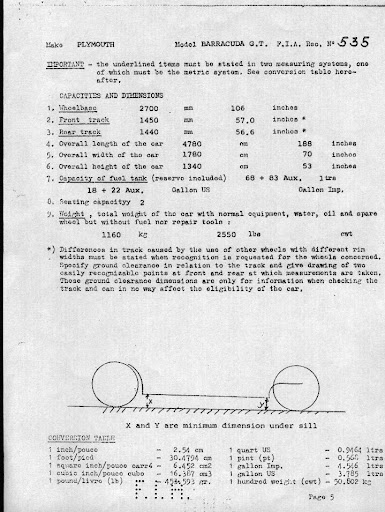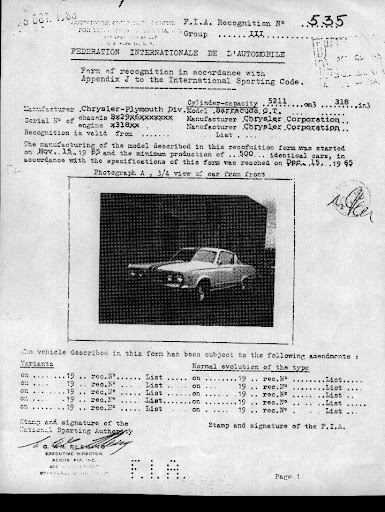Surely one or two have survived right?
I am talking about the 500 cars described in this document signed by H. E. Weiss & R. J. Cahill. Describing "In excess of 500 cars" produced between November 15th 1965 & December 15th 1965. Vin numbers B_29_6_ _ _ _ _ _ _ With engine numbers X31B_ _

Surely they were telling the truth about those cars.
They even gave the FIA pictures of the equipment in the cars:

The cars should be easy to spot. They have only two seats, they hold 40 gallons of fuel and weigh 2550 pounds without gas:

They has plexiglass rear windows, the seats only weigh 20 pounds with the rails & the car rides on 15x7 wheels:

The 318 in them had 2.00 intake and 1.65 exhaust valves, along with solid lifters. It was fitted with a 4160 Holley on an aluminum intake:

The battery was mounted in the trunk:

sounds like a fun car. They had to sell them to comply with the FIA rules. Back then to compete in FIA with that "GT" it had to be available through dealers.
So who is hording all this iron?
B.
I am talking about the 500 cars described in this document signed by H. E. Weiss & R. J. Cahill. Describing "In excess of 500 cars" produced between November 15th 1965 & December 15th 1965. Vin numbers B_29_6_ _ _ _ _ _ _ With engine numbers X31B_ _

Surely they were telling the truth about those cars.
They even gave the FIA pictures of the equipment in the cars:

The cars should be easy to spot. They have only two seats, they hold 40 gallons of fuel and weigh 2550 pounds without gas:

They has plexiglass rear windows, the seats only weigh 20 pounds with the rails & the car rides on 15x7 wheels:

The 318 in them had 2.00 intake and 1.65 exhaust valves, along with solid lifters. It was fitted with a 4160 Holley on an aluminum intake:

The battery was mounted in the trunk:

sounds like a fun car. They had to sell them to comply with the FIA rules. Back then to compete in FIA with that "GT" it had to be available through dealers.
So who is hording all this iron?
B.

















